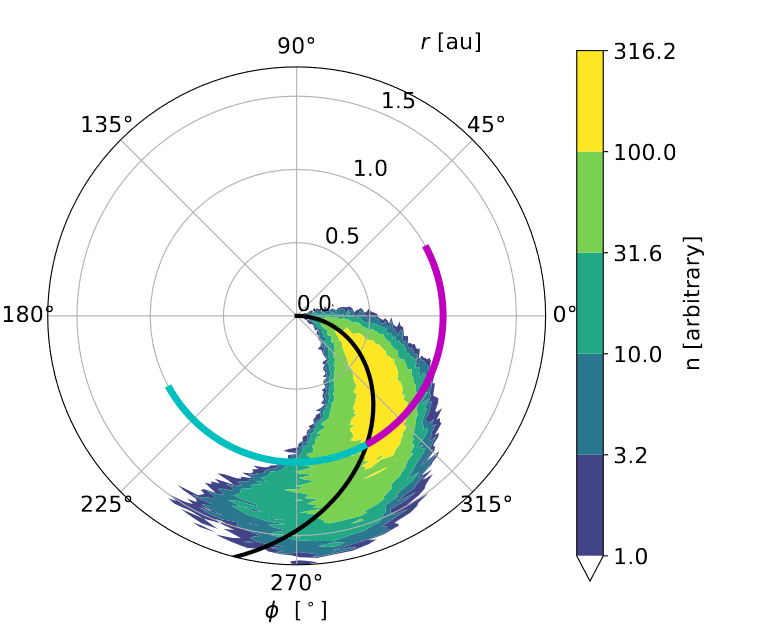Solar energetic particle event onsets at different heliolongitudes: The effect of turbulence in Parker spiral geometry

100 MeV protons simulated in turbulent heliosphere, 1 hour after injection
T. Laitinen, S. Dalla, C. O. G. Waterfall, A. Hutchinson
Context. Solar energetic particles (SEPs), accelerated during solar eruptions, are observed to rapidly reach a wide heliolongitudinal range in the interplanetary space. Turbulence- associated SEP propagation across the mean Parker spiral direction has been suggested to contribute to this phenomenon. \textbackslash Aims: We study SEP propagation in turbulent magnetic fields to evaluate SEP spatial distribution in the heliosphere, their path lengths, and the overall evolution of SEP intensities at 1 au. \textbackslash Methods: We use full- orbit test particle simulations of 100-MeV protons in a novel analytic model of the turbulent heliospheric magnetic field, where the turbulence is dominated by modes that are transverse and 2D with respect to the Parker spiral direction. \textbackslash Results: We find that by propagating along meandering field lines, SEPs reach a 60\textdegree-wide heliolongitudinal range at 1 au within an hour of their injection for the turbulence parameters considered. The SEP onset times are asymmetric with respect to the location connected to the source along the Parker spiral, with the earliest arrival times being 15\textdegree westwards from the well-connected Parker spiral longitude. The inferred path length of the first arriving particles is 1.5\ensuremath-1.8 au within 30\textdegree of the well-connected longitude; 20\ensuremath-30\% longer than the length of the random- walking field lines, increasing monotonously at longitudes further away; and 30\ensuremath-50\% longer than the Parker spiral. The global maximum intensity is reached 15\textdegree west from the well-connected longitude an hour after the SEP injection. Subsequently, the SEP distribution broadens, consistent with diffusive spreading of SEPs across the field lines. \textbackslash Conclusions: Our results indicate that magnetic field line meandering can explain rapid access of SEPs to wide longitudinal ranges, as well as several other features of SEP event intensity evolution.
A&A, 673, L8, 2023